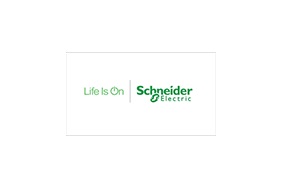Toward Net-Zero Value Chains: How To Minimize Your Scope 3 Emissions
Published 01-24-24
Submitted by Schneider Electric

Government and business leaders, climate experts, and other stakeholders gathering for the COP28 United Nations Climate Change Conference in December know that accelerating the energy transition is more important than ever. We are just 0.3°C away from overshooting pre-industrial targets, according to the World Energy Outlook 2023.
The good news is that more and more companies are making big efforts to reduce their carbon footprints. But what, exactly, are “their” emissions?
The easiest emissions to understand and address are what’s called Scope 1 and 2—those that are directly or indirectly produced by a company’s own operations. These include their energy consumption and the burning of fuel by their fleet of vehicles.
By far the largest part of a company’s carbon emissions, however—more than 70%, according to the UN Global Compact—come from the value chain (upstream and downstream activities). These “Scope 3” emissions come from suppliers’ goods and services, delivering products, using their products, and disposing their products when they reach their end of life.
So, businesses that are serious about decarbonization need to look beyond their own operations and address their entire value chain. And they need to realize that encouraging and helping their suppliers, customers, and other business partners to strive for greater energy efficiency—through electrification and digital and automation technologies—and cleaner energy procurement, is a huge part of the answer.
Recently, I discussed all this with other experts in the field at an FT Digital Dialogues event. I’ve summarized my ideas here to help other business leaders.
Navigating the challenges of Scope 3
Undoubtedly, there’s a lot to gain by increasing energy efficiency in value chains—both to lower corporate and global emissions, and in terms of costs. After all, investing in energy efficiency is investing in a saving. Crucially, when companies in a connected ecosystem decarbonize, the speed of progress increases rapidly.
But Scope 3 emissions are notoriously difficult to tackle. Companies lack direct control over what their supply-chain partners do to lower their energy use and carbon footprint. Their suppliers are often geographically and organizationally disparate. And some may operate in hard-to-abate heavy industries.
There’s also limited visibility when trying to account accurately for emissions from assets or activities that a company neither owns nor operates. Many suppliers are often small-medium enterprises (SMEs) with little or no in-house expertise or resources to prioritize this.
All of this comes amid of lingering post-pandemic disruptions, see-sawing raw materials and energy costs, and escalating geopolitical tensions.
So, how can companies navigate these hurdles?
Rethinking Scope 3 emissions strategies and setting targets
Any company looking to decarbonize across all scopes needs to break the process down into three key stages: strategize, digitize, and decarbonize.
The first step—strategize—involves establishing a baseline and setting strategic ambitions. The second—digitize—is about tracking real-time energy use and carbon impact using digital tools. The third—decarbonize—is about transitioning to renewable energy, electrifying operations, and driving efficiency.
Schneider has researched and mapped out scenarios to reach net-zero emission goals based on technology trends, climate action, and policy changes. We predict that demand-side actions—including optimizing energy use and shifting to electrically-powered processes—will make up around 55% of the carbon reduction required by 2050.
Digital technologies are central to this. Digital makes data visible, and if you can see it, you can track it. They provide businesses with the data they need to adjust and enhance their efficiency across assets, processes, and operations.
Schneider Electric’s Resource Advisor platform, for example, helps track emissions data against key metrics. Zeigo Activate empowers small and medium-sized companies to measure their emissions, build a decarbonization roadmap, and access solution providers. One solution is designed for large companies and the other one for SMEs, thus covering the whole ecosystem.
Making Scope 3 decarbonization progress through collaboration
We’ve been making strong progress on upstream Scope 3 decarbonization with our top 1,000 suppliers. The Zero Carbon Project, launched in April 2021, has a goal to halve their operational carbon emissions by 2025. By helping our suppliers set clear goals and milestones, we’ve armed them with the digital tools, training, and support to get started, and given them access to a community of like-minded firms to share what they learn.
Another concrete example of collaboration is our Energize program. Here, Schneider Electric is advising 16 of the world’s leading pharmaceutical companies on their renewable-energy procurement plans to deliver system-level decarbonization. So far, over 360 participating supplier companies have purchased more than 47,000 megawatt hours of aggregate Energy Attribute Certificates (EACs). The similar Catalyze program also works on a supply chain cohort approach, this time across the semiconductor industry.
Finally, on November 29th, ahead of COP 28, the Alliance of CEO Climate Leaders—CEOs from over 60 major companies, who have committed to reaching net zero emissions by 2050, including Schneider Electric—have launched the Scope 3 Upstream Action Plan. The Plan will see them set targets, encourage suppliers to increase transparency of their carbon footprints, and ultimately disclose and reduce Scope 3 upstream emissions.
On the Scope 3 downstream side, Schneider’s goal is to reduce emissions from the use of our products over their lifetime. We are designing our products and solutions to be more energy and material efficient, requiring less hardware to deliver an outcome, and we provide EcoCare Services to keep products healthy for longer.
Recently, Schneider Electric partnered with ArcelorMittal to use their steel produced from recycled and renewable material to manufacture our electrical products. Thus, we are saving up to 70% of CO2 emissions in the production of our PanelSeT enclosures. We also provide SF6-free equipment and SF6 recovery services to cut emissions from this climate-harmful gas.
Not sure how to begin?
Decarbonizing your value chain is a significant undertaking, and many companies are unsure of what targets are realistic and achievable.
By partnering with Schneider Electric, you can access the support and resources you need to succeed. The urgency of Scope 3 decarbonization is also an opportunity for companies to take ownership, with a trusted advisor by their side, and help their supplier networks do the same.

Schneider Electric
Schneider Electric
Schneider Electric is a European multinational company providing energy and automation digital solutions for efficiency and sustainability.
More from Schneider Electric

